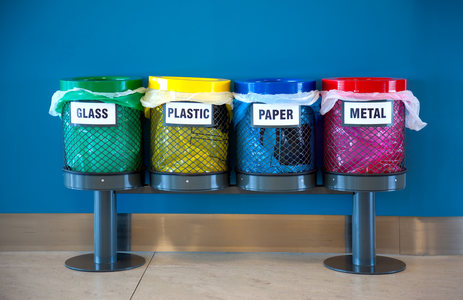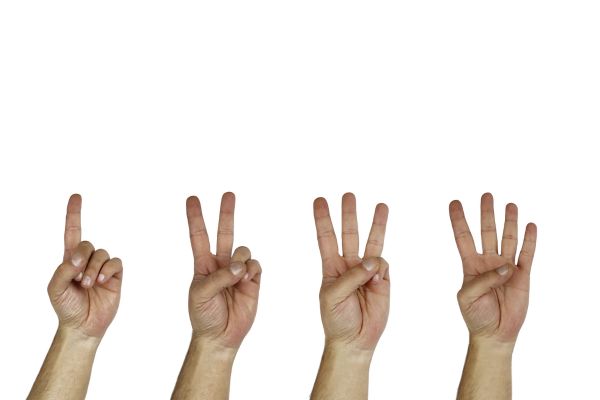I learned a new term the other day. It was “wish cycling”. It refers to the well-intentioned action of throwing anything and everything into the recycling bin in the hope that it can be recycled. The term was coined by Bill Keegan, President of Dem-Con Companies, a recycling and disposal company in the USA, and is now used to describe the behavior of many of us householders.
Unfortunately, I have been guilty of this for years and didn’t even realize it was a thing. Here I was going about my daily routine, thinking I was making a difference, albeit small, and in fact, I might have been making things worse. I did some research, and luckily, there is a cure for wish cycling.
Quick Navigation
What is Wish Cycling and Why Does it Matter?
Wish cycling is when you have to throw something out in the rubbish, but you are not sure where to throw it. Is it recyclable? Or should it go to a landfill? At least some of it can be recycled right?
You are not really sure, and you don’t want to send it to landfill by mistake. That would be wasteful. So just in case, you place the item in your mixed recycling bin, hoping that someone else will know what it is made of and either recycle it or send it to landfill for you.
I did this just not that long ago. We had to replace the light fitting in our bedroom, and I wasn’t sure if the glass could be recycled. I thought “there’s a chance it can, so I put it into the recycling bin just in case. Perish the thought that I throw something into landfill that could actually be recycled.
Why is wish cycling so bad?
Putting something in the recycling bin that cannot be recycled has some pretty dire consequences:
- It can make the recycling process more difficult.
- Items that can’t be processed can get stuck in the machines, causing shutdowns.
- It can contribute to contamination of recycling material outputs, lowering the quality.
- It can cause the entire batch of recycling to be sent to landfill, dooming tonnes of real recyclables.
- The extra costs from shutdowns and additional processing combined with an inferior product can impact the profitability of recycling overall.
So, something that seems harmless and helpful can actually cause many issues. Our good intentions are contributing to the demise of the recycling industry. So, let’s look at what we can do to be better at recycling.
How to break the wish cycler habit?
How do you stop being a wish cycler? The best way to do this is to become more informed. Here at Everyday Recycler, we aim to help you learn what you need to know, so make sure you check out our other articles.

Here are five easy steps to help break the cycle and become a better everyday recycler.
- Go back to basics
- Leave these things out.
- Check with your local council
- Look for a specialist recycler
- When in doubt leave it out
Let’s take a look at these steps in more detail:
1. Go Back to Basics
One way to help become a better recycler is by going back over the basics. Erase everything you think you know and re-learn what should and should not be placed in the Curbside Bin. There are only four things types of materials that should go into your curbside recycling bin. They include:
Refreshing our understanding of what items we can place into the recycling bin helps us get back on the right track. It also helps to eliminate some of the items that should not be placed into the curbside recycling bin.
2. Leave These Things Out
Knowing what NOT to put into your curbside recycling bin is just as important as knowing what you can put in. Here are some things you should definitely leave out:
- Textiles or clothes
- Polystyrene
- Batteries
- E-waste such as phones or computers
- Used tissues, nappies, or wipes
- Crockery, ceramics
- Pyrex or oven dishes, drinking glasses, mirrors, or window glass
- Greasy Pizza boxes
- Garden waste
- Plastic bags or other soft plastics
Most of these items can be recycled; they just cannot be recycled through your curbside recycling bin.
For example, soft plastics or plastic bags can be deposited at your local supermarket. You can check locations through groups such as Plasticfilmrecycling in the USA and Redcycle in Australia. Another example is battery recycling. Many stores in a lot of countries have battery recycling bins.
3. Check With Your Local Council
The simple list of 4 above is an excellent start to cleaning up your curbside recycling bin. There are a few more rules that you need to learn about the 4 different materials. For example, there are several rules about what type of glass you can put in your recycling and what types you should leave out.
So, how can you find out what these rules are? The best way is to refer to the regulations listed by your local authority. Each council accepts different types of materials in their curbside recycling. You see, each council has a contract with a different Materials Recycling Facility (MRF), and each of these facilities has unique processing capacities.
These differences can make it seem a little confusing at first, but once you start reading the information, you will discover that it is easier to follow than you think. Many councils have a poster you can print out and leave near your recycling to refer to when you need to.
Here are some sites that might help either find your local council or local recyclers.
4. Look For A Specialist Recycler
Just because your curbside recycling bin does not accept the material you need to throw out does not mean it cannot be recycled. Many specialist recycling companies will accept items from mobile phones to polystyrene to all your old e-waste or even all the pens you’ve been hoarding around the house.
Try searching Everyday Recycler for information on what you can recycle, or head to our Start Here page if you need more help.
5. When in Doubt, Leave It Out
If you are not sure if something can be recycled through the curbside recycling pickup, the first step is to find out as much as you can. First, check your local councils to see if they have more information. Refer to the links above to find your local information.
If you cannot find anything, then it will be best to leave it out of your recycling. One of the hardest things to acknowledge when breaking your wish cycling bad habits is that sometimes it is better to send an item to a landfill than contaminate all those good recyclables you have been collecting.
The best thing you can do when you discover an item that cannot be recycled and has to be sent to landfill is to think about how you might use an alternative material or product next time. Following the reduce, reuse, recycle mantra will help you to decrease the number of items that you need to send to landfill.
Why not start a “Landfill List”? We all love a good list! Keep a pad near your rubbish bins, and every time you have to put something into the general waste bin instead of the recycling bin, add it to your list. The next time you need to buy something new, you can check your list.
Wish cycling no more
Curb your wish cycling habits and help improve our curbside recycling. Stick to the main four groups of items: Paper & Cardboard; Metal; Glass; and Hard Plastic.
Don’t be afraid to get in touch with your local council, local waste transfer stations, or contact us here at Everyday Recycler to get help. Head to our Start Here page to begin.
Before you know it, you will be on your way to breaking your wish cycling habit and becoming an Everyday Recycling Champion.














